The Chinese New Year, also known as Spring Festival, marks the most vibrant and culturally significant holiday in Chinese culture. Spanning 15 days, this festive season is steeped in ancient traditions, family reunions, and, most notably, a lavish array of symbolic foods. Each dish served during this period carries profound meanings, often tied to wishes for prosperity, good fortune, health, and unity. From savory dumplings to sweet rice cakes, the culinary customs practiced during this time reflect centuries-old beliefs and regional diversities. This article explores the most iconic foods consumed during the Chinese New Year, their historical contexts, and the symbolic values they embody.
Dumplings (Jiǎozi – 饺子): A Symbol of Wealth and Reunion
Dumplings are perhaps the most iconic dish associated with Chinese New Year celebrations, particularly in northern China. These crescent-shaped pockets of dough, typically filled with seasoned meat and vegetables, are believed to resemble ancient Chinese gold or silver ingots, symbolizing wealth and prosperity. Families often gather on New Year’s Eve to participate in the time-honored tradition of making dumplings together, a practice that strengthens bonds and fosters togetherness. The act of folding dumplings is also seen as a way to “wrap up” good luck for the coming year. In some regions, coins or candies are hidden inside a few dumplings; finding one during the meal is considered auspicious, foretelling a year of financial success or sweet surprises.
Nian Gao (Niángāo – 年糕): The Sweet Rise of Ambition
Nian Gao, a sticky rice cake, is another quintessential treat enjoyed during the Lunar New Year. Its name is a homophone for “higher year,” a phrase that encapsulates the hope for personal and professional growth in the months ahead. Made from glutinous rice flour, sugar, and water, this chewy dessert is often steamed or pan-fried and served in slices. In southern China, Nian Gao is sometimes stuffed with red bean paste or dates, adding layers of flavor and texture. The dish’s sticky consistency is also said to symbolize family cohesion, reminding loved ones to remain closely connected throughout the year.
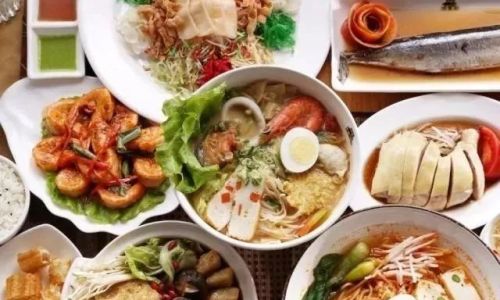
Spring Rolls (Chūn Juǎn – 春卷): Embracing Wealth and New Beginnings
Spring rolls, as their name suggests, are closely tied to the arrival of spring and fresh starts. These golden-brown pastries, filled with vegetables, meat, or seafood, are fried until crispy and served as appetizers or snacks. Their shape resembles gold bars, making them a popular choice for attracting wealth and abundance. The act of biting into a spring roll is believed to usher in good luck, as the crunchy texture mirrors the sound of gold coins jingling. In some households, spring rolls are also associated with the concept of “biting the spring,” a ritual meant to welcome the season’s renewal and vitality.
Fish (Yú – 鱼): The Promise of Surplus and Prosperity
A whole fish, steamed or braised and adorned with ginger and scallions, is a centerpiece of many New Year’s Eve feasts. The Chinese word for fish, “yú,” sounds identical to the word for “surplus,” making this dish a powerful emblem of abundance. Serving a whole fish—head and tail intact—symbolizes completeness and the hope for a prosperous year from start to finish. In some traditions, the fish is not entirely consumed during the meal; leaving a portion for the next day ensures that good fortune will carry over. Regional variations abound, with southern China favoring sweet-and-sour preparations and northern regions opting for simpler, salt-and-pepper seasonings.
Tangyuan (Tāngyuán – 汤圆): Sweet Balls of Unity
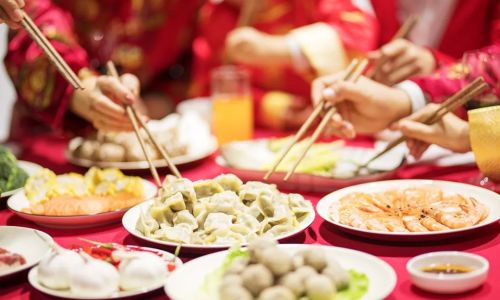
On the 15th and final day of the New Year celebration, known as the Lantern Festival, families gather to eat Tangyuan. These glutinous rice balls, filled with sesame, red bean paste, or peanut, are boiled in sweet syrup and served hot. Their round shape represents togetherness and harmony, as well as the full moon that graces the night sky during this time. In some cultures, Tangyuan is also associated with reunion, as families separated by distance strive to return home for this meal. The dish’s soft, chewy texture and warm, comforting flavors make it a beloved conclusion to the festive season.
Longevity Noodles (Chángshòu Miàn – 长寿面): A Wish for Enduring Health
Longevity noodles, uncut and served in a single strand, are a must-have dish for birthdays and New Year’s celebrations alike. Their length symbolizes a long and healthy life, and slurping them loudly is encouraged as a sign of enjoyment and appreciation. These noodles are often stir-fried with vegetables, meat, or seafood, creating a dish that is both visually striking and deeply symbolic. In some regions, the noodles are served in broth, accompanied by ingredients like mushrooms (for longevity) and bok choy (for wealth).
Fruits and Nuts: Auspicious Offerings for the New Year
No New Year’s spread is complete without a platter of seasonal fruits and nuts. Oranges and tangerines, with their golden hues, are favored for their resemblance to gold and their association with luck and wealth. Pomelos, large citrus fruits, symbolize abundance, while peanuts represent longevity. Jujubes, or red dates, are believed to bring happiness and prosperity. These items are often displayed in decorative bowls or baskets, adding vibrant colors to the dining table and serving as both snacks and offerings to household deities.

Regional Specialties: Diversity in Culinary Traditions
China’s vast geography has given rise to a rich tapestry of regional New Year dishes. In Guangdong Province, for example, “poon choi” (a layered casserole of meats, seafood, and vegetables) is a communal dish symbolizing unity. In Sichuan, spicy hot pots are popular for their warming qualities, while in Shanghai, “eight treasure rice” (a sweet dish with eight ingredients) is a festive favorite. In northern regions, where winters are harsh, hearty stews and braised meats dominate the menu, providing sustenance and warmth.
Modern Adaptations and Global Influences
While traditional dishes remain central to New Year celebrations, modern adaptations have emerged as families migrate and culinary trends evolve. Fusion recipes, such as dumplings filled with avocado or truffle oil, or Nian Gao coated in chocolate, reflect a blend of old and new. Additionally, as the Chinese New Year gains global recognition, communities worldwide now host banquets featuring international twists on classic dishes, from spring roll sushi to tangyuan-inspired mochi.
Conclusion: A Feast of Culture and Connection
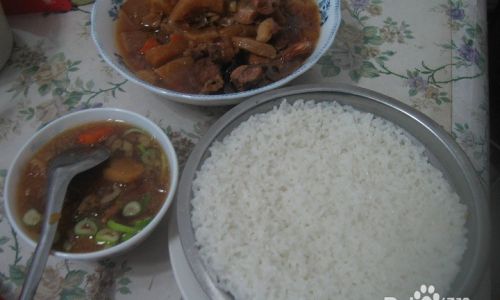
The foods eaten during the Chinese New Year are far more than mere sustenance; they are vessels of history, hope, and familial love. Each bite carries the weight of tradition, connecting generations and bridging distances. Whether it’s the comforting warmth of a dumpling, the sweet stickiness of Nian Gao, or the crisp crunch of a spring roll, these dishes embody the collective aspiration for a prosperous, healthy, and harmonious year ahead. As families gather around tables laden with symbolic fare, they reaffirm their cultural identity and pass down stories that have endured for millennia. In this way, the Chinese New Year feast is not just a meal—it is a living testament to the enduring power of tradition.
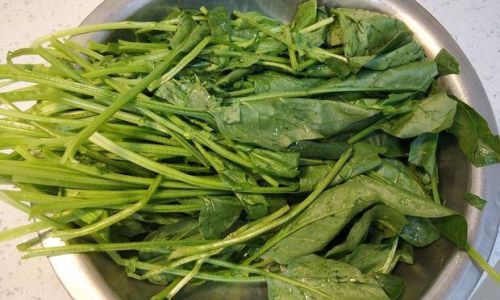
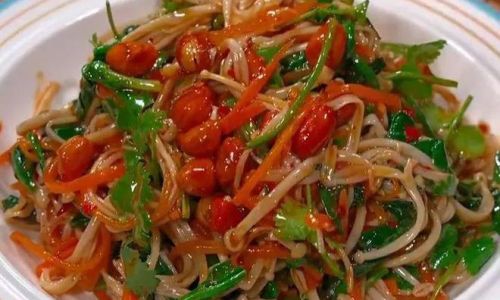
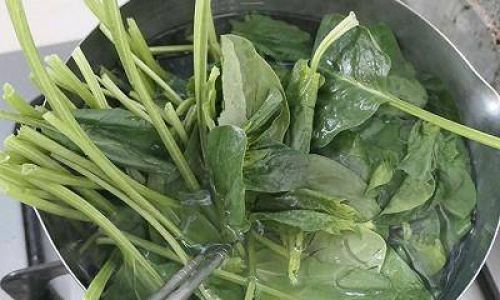


0 comments